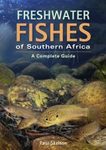Field / Identification Guide
New
By: Kélig Mahé(Author), Aurélie Matéos(Author), Émilie Poisson Caillault(Author), Sébastien Couette(Author), Rémi Laffont(Author), Kirsteen MacKenzie(Author), Nicolas Andrialovanirina(Author), Lauriane Poloni(Contributor)
78 pages, colour photos
![Identification des Poissons par Leurs Otolithes en Imagerie 3D: Manche et Mer du Nord [Identification of Fish by 3D Images of Their Otoliths: English Channel and North Sea] Identification des Poissons par Leurs Otolithes en Imagerie 3D: Manche et Mer du Nord [Identification of Fish by 3D Images of Their Otoliths: English Channel and North Sea]]()
Click to have a closer look
About this book
Contents
Customer reviews
Related titles
About this book
Language: French
The otolith, a calcified piece in the inner ear of fish, evolves throughout the life of individuals and is generally used to estimate their age. How then can we analyze this tiny mineral particle and what does it tell us about each species of fish?
This work offers a three-dimensional (3D) description and analysis of the shape of the otoliths of the main commercial species of the English Channel and the North Sea. This innovative approach, made possible by the use of X-ray microtomography, makes it possible to specify the characteristics of otoliths, to differentiate fish populations and to locate them geographically. This guide covers flat fish such as sole, dab, plaice or even turbot, and round fish, from herring to red gurnard and haddock. For each species, the authors selected five individuals representative of the species' size range and described their otolith shape.
A valuable resource for fisheries scientists and marine biologists, this guide refines the available body of knowledge of the fish species found in the English Channel and the North Sea.
Summary in French:
L’otolithe, pièce calcifiée dans l’oreille interne des poissons, évolue tout au long de la vie des individus et est généralement utilisé pour estimer leur âge. Comment alors analyser cette minuscule particule minérale et que nous dit-elle de chaque espèce de poisson ?
Cet ouvrage propose une description et une analyse tridimensionnelles (3D) de la forme des otolithes des principales espèces commerciales de Manche et de mer du Nord. Cette approche novatrice, rendue possible par l’utilisation d’un microtomographe à rayons X, permet de préciser les caractéristiques des otolithes, de différencier les populations de poissons et de les situer géographiquement. Poissons plats comme la sole, la limande, la plie commune ou encore le turbot et poissons ronds, du hareng au grondin rouge en passant par l’églefin, pour chaque espèce, cinq individus représentatifs de la gamme de tailles échantillonnés en milieu marin, ont été sélectionnés et leur forme d’otolithes décrite.
Ressource précieuse pour les sciences halieutiques, ce guide propose au domaine de la recherche et à celui des professionnels et techniciens de la mer un nouvel appui pour affiner leurs connaissances des espèces et individus de Manche et de mer du Nord.
Contents
Introduction
Zone d’étude
Utilisations des otolithes dans les sciences halieutiques
1. Différenciation des espèces par les caractéristiques morphologiques des otolithes
Choix des espèces et des prélèvements
Méthodologie
2. Présentation des espèces
Hareng commun
Anchois commun
Sardine commune
Sprat
Chinchard commun
Bar commun
Saint-pierre
Maquereau commun
Morue commune
Tacaud commun
Merlan
Églefin
Grondin rouge
Grondin perlon
Rouget barbet de roche
Sole commune
Limande-sole
Limande commune
Flet commun
Turbot
Plie commune
Barbue
Critères d’identification des espèces
Forme de l’otolithe liée à son habitat et à son morphotype
Conclusion
Bibliographie
Annexe. Paramètres d’acquisition des images pour chaque espèce de poissons
Customer Reviews
Field / Identification Guide
New
By: Kélig Mahé(Author), Aurélie Matéos(Author), Émilie Poisson Caillault(Author), Sébastien Couette(Author), Rémi Laffont(Author), Kirsteen MacKenzie(Author), Nicolas Andrialovanirina(Author), Lauriane Poloni(Contributor)
78 pages, colour photos






![Identification des Poissons par Leurs Otolithes en Imagerie 3D: Manche et Mer du Nord [Identification of Fish by 3D Images of Their Otoliths: English Channel and North Sea] Identification des Poissons par Leurs Otolithes en Imagerie 3D: Manche et Mer du Nord [Identification of Fish by 3D Images of Their Otoliths: English Channel and North Sea]](http://mediacdn.nhbs.com/jackets/jackets_resizer_xlarge/26/265325.jpg?height=620)
![Identification des Poissons par Leurs Otolithes en Imagerie 3D: Manche et Mer du Nord [Identification of Fish by 3D Images of Their Otoliths: English Channel and North Sea]](http://mediacdn.nhbs.com/jackets/jackets_resizer/26/265325.jpg)














![A Photographic Guide to Gobioid Fishes of Japan [Japanese]](http://mediacdn.nhbs.com/jackets/jackets_resizer_medium/25/253320.jpg?height=150&width=95)

![Les Termites dans le Monde [Termites of the World]](http://mediacdn.nhbs.com/jackets/jackets_resizer_medium/18/182815.jpg?height=150&width=85)
![Arbres, Arbustes et Lianes d'Afrique de l'Ouest [West African Trees, Shrubs and Lianas]](http://mediacdn.nhbs.com/jackets/jackets_resizer_medium/24/246252.jpg?height=150&width=100)
![Paysage, Biodiversité Fonctionnelle et Santé des Plantes [Landscape, Functional Biodiversity and Plant Health]](http://mediacdn.nhbs.com/jackets/jackets_resizer_medium/25/253537.jpg?height=150&width=100)
![Grenouilles, Crapauds & Cie: Parlez-Moi d'Anoures… [Frogs, Toads & Co.: Tell Me about Anurans...]](http://mediacdn.nhbs.com/jackets/jackets_resizer_medium/23/238491.jpg?height=150&width=131)
![Les Maladies Émergentes: Épidémiologie chez le Végétal, l'Animal et l'Homme [Emerging Diseases: Epidemiology in Plants, Animals and Humans]](http://mediacdn.nhbs.com/jackets/jackets_resizer_medium/23/237748.jpg?height=150&width=97)
![Oiseaux et Changement Global: Menace ou Aubaine? [Bird and Global Change: Threat of Windfall?]](http://mediacdn.nhbs.com/jackets/jackets_resizer_medium/22/224993.jpg?height=150&width=132)
![Les Orchidées Sauvages de Paris [The Wild Orchids of Paris]](http://mediacdn.nhbs.com/jackets/jackets_resizer_medium/17/179793.jpg?height=150&width=85)
![Les Invertébrés Marins du Golfe de Gascogne à la Manche Orientale: Guide d'Identification des Èspeces Recoltées dans les Chalut [Marine Invertebrates of the Bay of Biscay at the Eastern Channel: Identification Guide for Trawl-Harvested Species]](http://mediacdn.nhbs.com/jackets/jackets_resizer_medium/18/183611.jpg?height=150&width=100)
![Poissons de l'Océan Indien Et de la Mer Rouge [Fishes of the Indian Ocean and Red Sea]](http://mediacdn.nhbs.com/jackets/jackets_resizer_medium/20/200808.jpg?height=150&width=94)
![Les Insectes du Monde [Insects of the World] (2-Volume Set)](http://mediacdn.nhbs.com/jackets/jackets_resizer_medium/25/255244.jpg?height=150&width=235)

![Agriculture et Développement Durable: Guide pour l'Évaluation Multicritère [Agriculture and Sustainable Development: Guide for Multicriteria Assessment]](http://mediacdn.nhbs.com/jackets/jackets_resizer_medium/25/253538.jpg?height=150&width=101)